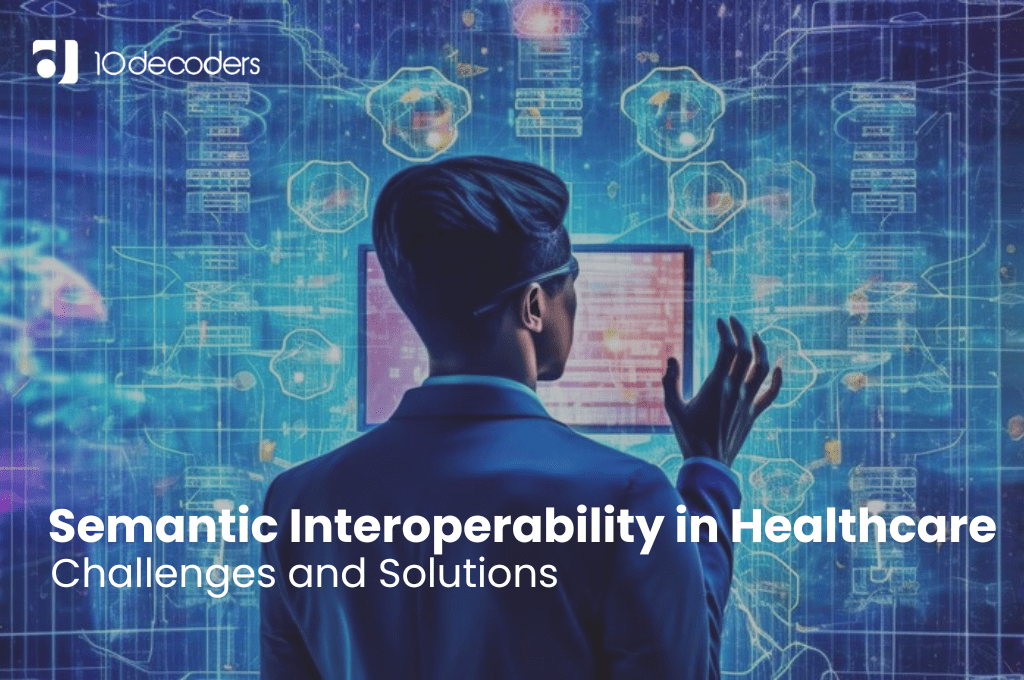Semantic Interoperability in Healthcare: Challenges and Solutions
The possibilities are endless, where a patient’s medical records effortlessly travel between hospitals, clinics, and even wearables. Diagnoses wouldn’t get lost in translation, medications wouldn’t be duplicated, and personalised care would truly become a reality. This is the promise of semantic interoperability in healthcare – but the path to achieving it is riddled with challenges.
What is Semantic Interoperability?
Simply put, semantic interoperability means that different healthcare systems can not only exchange data, but also understand its meaning. It’s about translating the complexities of medical terminology into a common language that computers and humans can both comprehend. This eliminates ambiguity and ensures that the right information reaches the right people at the right time.
Why is it Important?
The fragmented nature of healthcare data is a major roadblock to quality care. Different hospitals use different systems, terminologies, and data formats, creating data silos that prevent efficient information exchange. This leads to
- Duplication of tests and procedures: Patients may undergo unnecessary tests if their previous results are inaccessible.
- Medication errors: Misinterpretations of medication names or dosages can harm patients.
- Delayed diagnoses and treatment: Crucial information may be missed if it’s not readily available to healthcare providers.
- Poorly coordinated care: Lack of communication between providers can lead to fragmented and ineffective care plans.
The Driving Force for Better Healthcare: Why It Matters
The implications of semantic interoperability are manifold and transformative
- Enhanced Clinical Decision-Making: With a holistic view of a patient’s medical history across institutions, healthcare providers can make informed diagnoses, tailor treatment plans, and personalise care.
- Empowered Patients: Secure access to their own health data through patient portals fosters active participation in healthcare decisions and improves patient engagement.
- Accelerated Research and Innovation: Analysts can leverage large, interoperable datasets to identify trends, develop new diagnostics and treatments, and personalised medicine.
- Reduced Administrative Burden: Streamlined data exchange minimises errors and redundancy, streamlining paperwork and reducing costs for healthcare providers.
- Public Health on the Frontlines: Real-time data sharing during outbreaks or epidemics enables rapid and effective interventions, safeguarding public health.
From Theory to Practice: Real-World Applications
The potential of semantic interoperability is not confined to theoretical discussions; it’s already transforming healthcare in tangible ways
- Wearables Joining the Care Team: Data from fitness trackers and smartwatches can be seamlessly integrated into a patient’s EHR through FHIR APIs, providing invaluable insights into activity levels, sleep patterns, and overall health.
- Mobile Apps as Healthcare Partners: Imagine a diabetic patient’s glucose monitoring app sharing data with their EHR, automatically adjusting insulin dosage, and alerting their doctor in case of hypoglycemia.
- Public Health on the Offensive: During a pandemic, health authorities can utilise semantic interoperability to gather and analyse real-time data on cases, exposures, and vaccine distribution, informing effective public health measures.
The Challenges of Semantic Interoperability
While the benefits of semantic interoperability are undeniable, achieving it is far from simple. Here are some of the key challenges
- Standardisation: A multitude of medical terminologies and coding systems coexist, creating confusion and inconsistency. Establishing a single, universally accepted standard is crucial.
- Data Quality: Medical data is often incomplete, inaccurate, or outdated. Cleaning and standardising data before exchanging it is essential.
- Technology Limitations: Existing healthcare systems may not be equipped to handle complex semantic data exchange. Upgrading infrastructure and adopting new technologies can be costly and time-consuming.
- Privacy and Security: Sharing sensitive patient data raises concerns about privacy and security. Robust security measures and strict data governance practices are necessary.
- Lack of Awareness and Adoption: Many healthcare providers and organisations are unaware of the importance of semantic interoperability or lack the resources to implement it.
Finding Solutions
Despite the challenges, progress is being made towards achieving semantic interoperability. Here are some promising solutions
- Adoption of FHIR (Fast Healthcare Interoperability Resources): FHIR is a rapidly growing standard that uses web technologies to facilitate data exchange and interpretation. Its flexibility and simplicity make it a powerful tool for building interoperable systems.
- Natural Language Processing (NLP): NLP algorithms can analyse and understand the meaning of free-text medical data, bridging the gap between human language and machine-readable formats.
- Blockchain Technology: Blockchain’s secure and transparent data ledger can facilitate secure and auditable data sharing between healthcare providers.
- Collaboration and Partnerships: Healthcare stakeholders, including government agencies, technology companies, and healthcare providers, need to collaborate to develop and implement common standards and best practices.
The Road Ahead
Achieving true semantic interoperability in healthcare is a long-term journey. However, the potential benefits are so significant that the effort is worthwhile. By addressing the challenges, embracing innovative solutions, and fostering collaboration, we can move closer to a future where healthcare data flows freely, empowering patients, improving care, and ultimately saving lives.
Conclusion
Semantic interoperability is not just a technical challenge; it’s a transformative vision for healthcare. By breaking down data silos and forging a common language, we can unlock a world of possibilities for personalised care, improved outcomes, and a healthier future for all. Let’s embrace the challenges, work together, and pave the way for a truly interconnected healthcare ecosystem.



